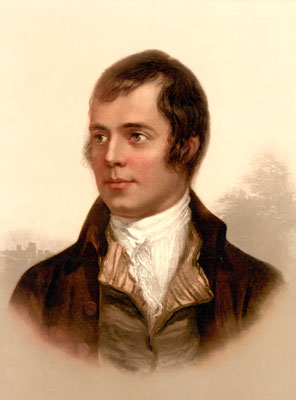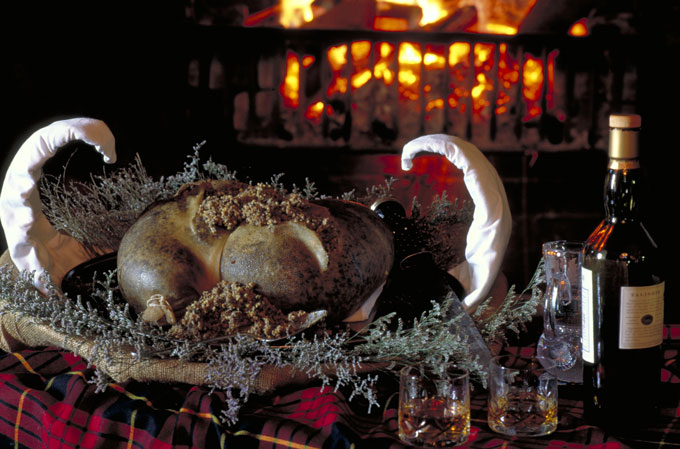Whisky is essential, haggis a must and bagpipes a bonus when Scotland celebrates the life of its favourite son, Robert Burns
If you’ve ever been invited to supper in Scotland on 25 January then you’ll have been treated to the sight of your host wearing a skirt and talking to the food. “Trenching your gushing entrails bright,” he will say, slipping a knife into a mush of sheep’s heart, lungs and liver. “O what a glorious sight,/ Warm-reekin, rich!”
Don’t be disturbed, however, for this is Burns Night – one of Scotland’s most glorious celebrations and homage to the country’s favourite poet.
Robert Burns was born in Alloway, Ayrshire in the west of Scotland in 1759 (the little dwelling is now called Burns Cottage and home to a museum, run by the National Trust for Scotland). The ‘Ayrshire Bard’, as he is known, worked primarily as a farmer, but when his first edition of poetry was published in 1786 it sold out within a month. He promptly moved to Edinburgh in order to publish more.
Burns’ poems were popular, and have lasting appeal, because of how he managed to communicate universal emotions so acutely. His most famous works include Auld Lang Syne and My Luve is a like a Red Red Rose.

The Burns Night tradition started five years after his death in 1796 at the age of 37. A small group of his friends wanted to honour his life and works and did so with an intimate meal where they recited Burns’ poems. The evening was such a success the group arranged to meet each year on 25 January, Burns’ birthday.
That custom is now an international institution: Burns Night is celebrated all over the world in festivities that cement the poet’s status as Scotland’s most renowned and cherished poet. Almost needless to say, Burns Night calls for a nod to Scottish heritage when it comes to dress; guests should arrive wearing anything from full kilt to tartan accessories.
The Selkirk Grace, which is recited as a means of thanksgiving before supper, is often erroneously attributed to Burns but isn’t one of his works. It was already known as the Galloway Grace and was once narrated by Burns at a dinner given by the Earl of Selkirk.
One of the main components of Burns Night is the ritual of the feast. This will typically include cock-a-leekie soup, haggis, turnips (known as ‘neeps’) and potatoes (known as ‘tatties’). The neeps and tatties are usually served mashed. The meal is finished off with clootie dumpling, a sweet dessert of breadcrumbs, currants, suet, sugar and spices baked inside a tied up strip of cloth or ‘clootie’.
The most important of these dishes is the haggis, a savoury pudding containing sheep’s pluck (heart, liver and lungs). The presentation of this is traditionally accompanied by the playing of bagpipes.
With the food on the table, one of Burns’ most famous poems Address to a Haggis is delivered, usually by the host: “Fair fa’ your honest, sonsie face/Great chieftain o’ the puddin’-race!”
During this recital, the haggis is sliced open from one end to the other and then, finally, the company will join in a whisky toast to the poet. (Throughout the supper whisky is drunk in abundant toasts: both malts and blends are acceptable.) After the meal has been eaten there are speeches given in honour of Burns, each known as Immortal Memory. Burns Night will always end with the joining of hands and the singing of Auld Lang Syne.






 © 2024
© 2024